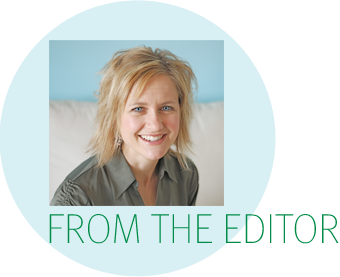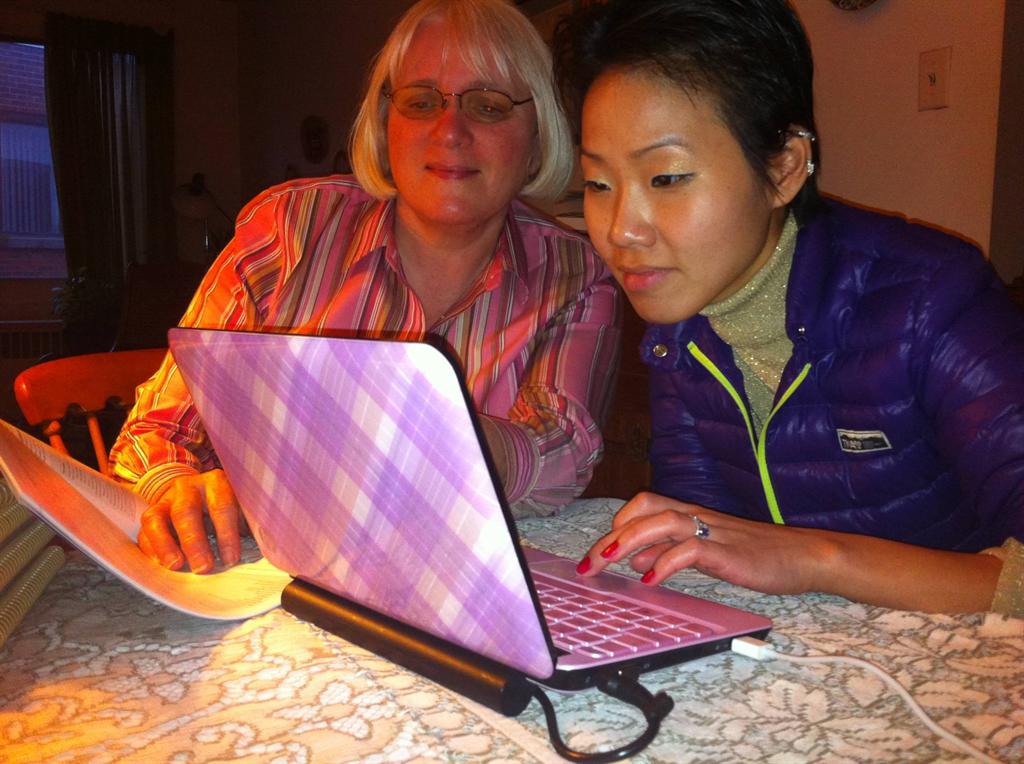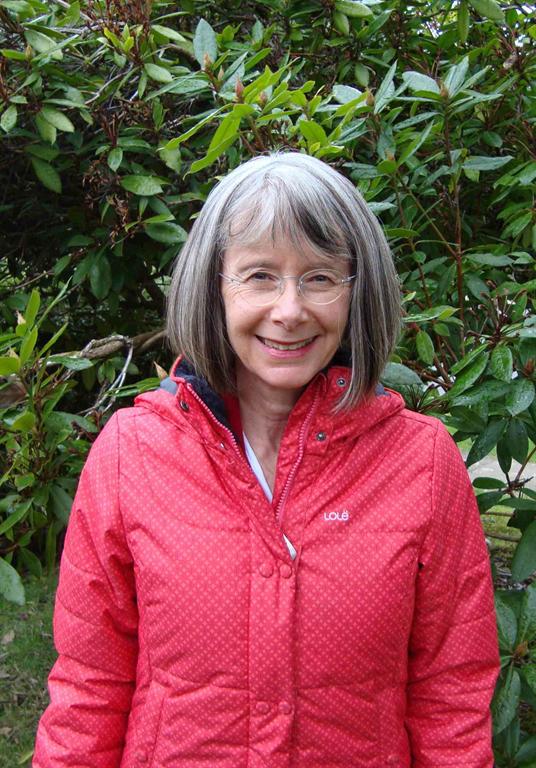PEN eNews 2(6) April 2013
PEN
® eNews is a monthly e-newsletter shared with the global PEN Community and created to help dietitians position themselves as leaders in evidence-based nutrition practice. In addition, users of the PEN System will find articles on the new evidence, resources and features available and how to maximize one's use of PEN.

Dietitians share evidence-based Guidance
In the month of March, we saw dietitians showcase their evidence-based approaches to every day questions. Canadian dietitians showed leadership in Nutrition Month, with this year’s theme focusing on practical, and evidence-based tips for grocery shopping to better health. We saw UK dietitians show their unique knowledge base on concerns related to processed meats. We saw Australian dietitians translate updated national healthy eating guidelines to consumers.

Sometimes dietitians share evidence-based guidance that is in contrast to popular trends. Take coconut oil – PEN’s evidence analyses has shown that, compared to other fat sources, coconut oil does not raise total cholesterol and LDL cholesterol levels to the same extent as butter; but does increase total cholesterol and LDL levels to a greater extent than vegetable oils. As such, coconut oil cannot be recommended as a suitable alternative to non-hydrogenated vegetable oils despite its positive effects on HDL-cholesterol.
http://ow.ly/hAU8l
Nutrition is filled with controversy. Dietitians cut through the nutrition clutter. Our foundational knowledge, training, critical thought and approach underpin a dietitian’s skill to separate fact from fiction. We are accountable to our regulatory bodies, we are supported by our country’s professional association, and PEN, our decision-support tool.
This issue of eNews has articles that will help you explore factors that may influence your decision-making. …. and another thing…about bias highlights how we believe things that can get in the way of the truth of the evidence. Hunting, Foraging and Hot-Syncing Your Way to Better Decisions highlights two systems of thinking and how they are both involved in our decision-making. We share our final tip in the series social media. This and more in eNews 2(6).
Kristyn Hall MSc, RD
Editor, PEN eNews
PEN eNews may contain links to other external websites. Pennutrition.com is not responsible for the privacy practices or the content of such external websites. Dietitians of Canada, Dietitians Association of Australia, Dietitians New Zealand and the British Dietetic Association do not endorse the content, products or services on other websites.
What's New in PEN
40 PEN PETs have been Unleashed! 
The new PETs (Practice-based Evidence Toolkits) will replace Practice Guidance Summaries and make access to practice information and tools more accessible through separate Nutrition Care Process sections, and are presented in a format consistent with International Dietetics & Nutrition Terminology (IDNT). Other great features include calculators (BMI for Adults, BMI for Children, a Metric Converter), and country-specific information available for Canada, Australia, New Zealand and the United Kingdom where appropriate.
To Access PETs, Click on the
Toolkits icon on the PEN home page; or on the Knowledge Pathways
Table of Contents page, click on the any of the magnifying glasses under the Toolkit/Practice Guidance Summary (PGS) column.
Wondering what else is new in PEN? Here is a list of our updated content in PEN, including updated knowledge pathways, new practice questions, updated practice questions, new professional tools, updated professional tools, and new handouts available.
Updated Knowledge Pathways
New Practice Questions
Updated Practice Questions
News-making Evidence
Professional Tools
Client Tools
How Do I …. Access the New PEN PETs?
The PEN PETs have been Unleashed! Have you seen the new PETs (Practice-based Evidence Toolkits)? Forty have just been unleashed to their respective Knowledge Pathway “homes”.
PETs (Practice-based Evidence Toolkits):
- Make the access to essential information on nutrition assessment, diagnosis, intervention, monitoring, associated tools and education materials based on nutrition-related conditions / diseases more 'up-front' and easier to retrieve; and
- Present information in a format consistent with International Dietetics & Nutrition Terminology (IDNT) with direct access to succinct information dietitians can use in their practice.
- Other GREAT features include:
- Separate sections with focused topic areas based on the Nutrition Care Process
- Calculators, a new tab on PEN's Home page and will include: BMI for Adults, BMI for Children and a Metric Converter
- Direct links to your favourite PEN Client handouts and other related tools and resources
- Country-specific information available, where appropriate, for Canada, Australia, New Zealand and the United Kingdom.
How To Access the New PETs:
- On the PEN Home page, click on the Toolkits icon that leads to all available PETs.
- On the Knowledge Pathways Table of Contents page, click on the any of the magnifying glasses under the Toolkit/Practice Guidance Summary (PGS) column. You can only access either a Toolkit or PGS. PETs will eventually replace all the PGSs in PEN.
- Within a knowledge pathway, click on the “Toolkit “ tab on the right hand side of the page. The Toolkit tab will only display as an option if the knowledge pathway has a new toolkit. Here are a couple of toolkit links to get you started:
PET 101:
- Click on any of the items on the Table of Contents of the right hand side of a toolkit to get quick, direct access to any section within the toolkit.
- Headings with a “+” beside it means that there are other contents hidden underneath the heading. Be sure to click on it to see other topics.
- Flags! Where information is specific to a particular country, you have the option of seeing only your country’s information or viewing other’s information as well. Simply click the box at the top of the page for the country information that you would like to view and it will be displayed (or alternatively unclick the box to hide it).
Here is a screen shot demonstrating the key titles and subtiles within the toolkits:
We hope this helps you to get to know your PET(s). More PETs and calculators will be added regularly to PEN so we welcome your feedback. Contact us directly, or take our short survey.
Jane Bellman –
jane.bellman@dietitians.ca
Written by the PEN Team April 2013
…and another thing…about bias
Previous issues of PEN eNews have addressed publication bias and more recently, how study design can contribute to a high or low risk of bias. There is another kind of bias that has been described by Ben Goldacre author of Bad Science in a chapter brilliantly entitled: Why Clever People Believe Stupid Things (1). He and others refer to this kind of bias as “cognitive illusions”.
As consumers or users of evidence, we do/see/ believe all kinds of things that get in the way of the truth of the evidence – these cognitive illusions can affect researchers also. Here are some examples that Goldacre explores:
 We are wired to see patterns where none exist – it is why statistical analyses are so important!
We are wired to see patterns where none exist – it is why statistical analyses are so important! - Regression to the mean describes the situation when things are bad or extreme, they generally tend to return to normal or to the mean. We also tend to act or intervene with a treatment when things are at their worst and in these circumstances we may attribute the improvement in our condition to our intervention rather than the phenomenon of regression to the mean. For example, if I am ill with the flu and my husband makes me a cup of lemon tea and I feel better, I may ascribe the improvement to the tea rather than the flu simply following a normal course and gradually improving with time. A formal trial with a control group might help sort out a true effect from regression to the mean.
- We favour positive information or evidence and publishers do too! This may mean that we are more likely to take studies that confirm our beliefs at face value while we carefully scrutinize and criticize those that differ.
- We are biased by our prior beliefs and we selectively expose ourselves to situations and information that conforms to our beliefs. In research, we might be tempted to seek out confirmatory evidence for a given hypothesis – this is also known as cherry picking. It is one of the reasons why narrative reviews are not ranked as highly as systematic reviews in terms of the evidence hierarchy. Without a systematic approach to locating research evidence we may be more likely to select evidence which matches our beliefs or hypotheses while ignoring evidence that challenges them.
- In communal reinforcement “a claim becomes a strong belief, through repeated assertion by members of a community” or particular group (1). A good example of this phenomenon in our own practice domain might include the longevity of clear fluid diets though evidence for their efficacy in most refeeding situations remains elusive.
- We are drawn to the exceptional, the interesting, the theatrical or the miraculous anecdote or story. Our emotional response influences us more than facts and can affect our judgment. This is also called availability heuristic and it can lead to bias (2). Quite simply, we are more likely to recall or place importance on personal experiences, pictures or dramatic stories compared with statistics or objective narrative.
- Storytelling can add richness to describing an experience or the impact of the experience and can be a valuable research tool. However, Newman in his article The power of stories over statistics draws our attention to the need to be aware of situations where stories and the emotional response they elicit can overwhelm evidence during guideline or policy development.
Asking ourselves “Why do I believe this?” or “How do I know this to be true?” might help us uncover cognitive illusions at work in our own judgment or decision-making.
Written by Dr. Jayne Thirsk, RD, PhD, FDC
Director, Practice-based Evidence in Nutrition
References
- Ben Goldacre. Bad Science, London: Fourth Estate; 2009 p. 242-255.
- Daniel Kahneman. Thinking, Fast and Slow, Canada: Doubleday Canada; 2011 p. 129-136.
Hunting, Foraging and Hot Synching Your Way to Better Decision-Making
Daniel Kahneman is a psychologist who has spent much of his life studying judgment and decision-making for which he won the Nobel Prize. His ideas about system 1 and system 2 thinking have been applied to the fields of economics, medicine and politics and shared beyond academic circles in his award winning book: Thinking, Fast and Slow (1).
System 1 thinking is about our quick, intuitive thinking or decision-making. It refers to the construction and use of mental maps, rules of thumb, or internalized tacit guidelines (1,2). After I was in clinical practice for a number of years, I could obtain a diet history from a patient without having to “think” much about it. I just “knew” how to start, what prompts to use and how to probe for more information. Our system 1 thinking is usually developed from our undergraduate training, our experience and from talking to, or observing colleagues. It uses only a small bit of available evidence and so is subject to all those
cognitive illusions or biases described in another PEN eNews article… things like - being drawn to evidence that agrees with what we already believe or being strongly influenced by stories or personal experience etc.
System 2 thinking refers to analytical thinking. It involves the rationale analysis of all available evidence or information. It is time consuming and requires skill (1,2). Again, thinking back to my clinical practice, very occasionally a child would be admitted with an inborn error of metabolism. Aside from the momentary sense of panic (perhaps an example of system 1 thinking) I would carefully scrutinize the chart, obtain and review previous admission notes, consult with the pediatrician, the family, the child (not necessarily in that order) and the latest research evidence to come up with my nutrition recommendations. This was system 2 thinking being called into play.

It is NOT a case of one system being better than the other – both serve important purposes. If you rely too much on system 2 thinking, you may encounter analysis paralysis… too much thinking or analyzing and a failure to act in a timely way. If you rely too much of system 1 thinking, you may encounter more errors (making decisions too quickly and without considering all the important information) and you may fail to adopt new evidence into your practice (3).
We human beings are a bit of a lazy lot. If faced with a patient or situation that we even remotely recognize, we tend to slip into system 1 thinking or decision-making; relying on what we were taught, what we have always done, or what we see others doing (3). Our preference for system 1 thinking makes it hard for us to incorporate new information into our decision-making processes (especially if it conflicts with previous assumptions and knowledge).
Clinical decision-making can be improved if we make appropriate use of both system 1 and system 2 processing and take steps to keep both of these systems up to date with the latest and best evidence.
Building on the initial work of Slawson et al (4) and Maskrey et al (5) the British National Health Service (3) described a system for practitioners to keep both system 1 and system 2 decision-making up-to-date. They framed it in terms of hunting, foraging, and hot syncing your way to information mastery.
Hunting: have a system in place to help you find the best answer (not just any answer) to specific questions quickly and efficiently. PEN is perfectly suited to this kind of information gathering.
Foraging: have a system in place that alerts you to new, valid, important and applicable information that should change your practice. Some databases of systematic reviews have alerting systems whereby they notify you of new systematic reviews in areas you identify when you register.
PEN is considering such a system – we’d like to hear from you if you think this would be a valuable service.
Hot synching: involves deliberately checking and updating your personal mental maps or checklists of knowledge and skills once or twice a year in the areas that you work in. This will ensure your automatic processes and mental maps (system 1 thinking) are in line with best evidence. “So just as we might “hot synch” our Blackberry with our emails, appointments and contact – or our iPod with our music playlists - we can do the same for the evidence we need to know to be able to manage the conditions we see commonly” (5).
PEN was designed to help dietitians manage the vast amount of nutrition research published every year. By answering practice questions, preparing evidence summaries, creating new
toolkits of succinct practice guidance and tools to translate this new information to your clients it efficiently supports effective decision-making.
Why not spend a little time with the new PEN Table of Contents to locate the tools best suited to your practice needs. “An essential part of all three components is that health professionals should preferentially use trustworthy, pre-appraised summaries of information which set new evidence in the wider context, rather than reading and attempting to critically appraise primary research.” (3)
Written by Dr Jayne Thirsk RD, PhD, FDC
Director, Practice-based Evidence in Nutrition
References
Coming Soon: QUICK-SYNCH Service…another way to get fast, easy access to best evidence for practice
Now you can hot-synch your brain – just like your smart phone with a new professional development tool from Dietitians of Canada!

FEATURES
- Focused overview of single practice topic from Practice-based Evidence in Nutrition (PEN)
- Designed for the busy health practitioner with an hour or less to spend per week on continuing professional development
- Self-scoring quiz with immediate feedback on knowledge gained
- Certificate of completion for your professional development portfolio
- Supports self-reflection on what you learn and how you will apply it to practice
What reviewers are saying about Quick-Synch Service (QSS)
“These modules are great! They capture all the highlights that a novice would find useful.”
“A great tool for learners.”
Watch for updates and announcements - coming soon! What QSS module topic do you most wish for? Email us at enews@pennutrition.com
Do you help shape our future?

Do you work with dietetic / nutrition students or dietetic interns? Want to share an innovative way you use PEN to support student / intern learning? We have published articles highlighting how students use PEN in their projects and how PEN is impacting their education and training. We would like to hear YOUR student's stories!
Write a Article for PEN eNews! Articles should be ~ 350 words and include a
1) Article title
2) Include a photo or link to a video
3) Main points/body of article
4) Resources/links and references (where appropriate)
We look forward to hearing about dietetic / nutrition student and dietetic intern experiences!
In the last 40 years, women and men now live 10 years longer in life, but spend more years living with injury and illness. This paper, Global Burden of Disease Study 2010, describes the global distribution and causes of major diseases and health risk factors. This paper could be of particular help to dietitians writing up research studies and/or grant proposals. Available at http://www.pennutrition.com/NewsMakingEvidence.aspx [login required]
Student corner
Spotlight on Bo Tang

Bo Tang – Level IV - McGill Dietetic Stagiaire
Montreal, Quebec, Canada with Beth Armour, PEN
Content Manager "You will be doing a four-week community rotation with a dietitian who helps to develop PEN content” my coordinator told me. Dazzled by the idea of being involved in a global nutrition resource, I began my journey as an intern in evidence-based practice.I had heard of PEN many times before, from both professors in school and dietitians in the field. It was defined to me as a tool to find answers to nutritional-related questions I might encounter in day-to-day life. For various reasons, my use of PEN in the past was very limited. Could I trust what PEN had to offer? Now I realize how hard the PEN team, including the editor, content and resource managers and evidence analysts work behind the scenes to find the most reliable and most up-to-date research to include in PEN.
My supervising dietitian and I were busy in December 2012. It is a very dynamic working environment even though I worked at her dining room table at her home every day. New topics pop up every day and content gets renewed on a regular basis. Most of the time, I felt like an octopus with each tentacle doing different things at the same time. One knowledge pathway could split into multiple other pathways, and they all offer evidence-based guidance to nutrition- practice questions we encounter as dietitians every day.
PEN follows a PEN protocol for finding the evidence. “In developing the content for PEN, validated and refined filtered information sources including synopses, well-conducted systematic reviews (such as Cochrane Reviews) and reputable practice guidelines are used to form the basis for the evidence synthesis. PubMed is also used to identify any scientifically valid and relevant articles for analysis.” (1).
In a PEN evaluation survey, 92% of respondents indicated that they were confident with the quality of PEN information (2). This reputation is earned through the hard work and collaboration of the PEN team. Together, they ensure current, uniform authoritative guidance on food and nutrition is delivered in an easily accessible, timely manner.
Through my experiences as a writer of PEN content, I have learned how to more effectively research the sea of contradicting evidence. It is extremely important to assess the accuracy of the information we as health practitioners gather, especially when it comes to a resource, or teaching material, or a consumer handout that is recognized globally. Nowadays, it has become difficult for consumers to build trust in us when they receive mixed messages from the media and the internet. It is our role, as dietitians, to clarify the cloud of mixed messages. PEN will guide me in my coming days as a newly graduated, well-informed dietitian. How will it guide you?
Written by Bo Tang – Level IV - McGill Dietetic Stagiaire, Montreal, Quebec, Canada
References:
- The Global Resource for Nutrition Practice [PEN]. PEN Protocol for Finding the Evidence. 2012. [cited 2012 Dec 20] from http://www.pennutrition.com/aboutpen.aspx
- Evaluation of Practice-based Evidence in Nutrition [PEN]. Final Report to the Canadian Council on Learning. April 2009 [cited 2012 Dec 20]
This thought-provoking article highlights the hottest and coolest trends for physicians. How do you think these trends might apply to dietetic practice? [login required] http://www.medscape.com/viewarticle/779316
Social Media: Dialling into the Digital Age Part VI
Highlights of this article have been drawn from the Dietitians Association of Australia’s, ‘Dialling into the digital age: Guidance on social media for DAA members’ resource (2011). Authored by Emma Stirling, and DAA Reference Group members Catherine Saxelby, Zoe Nicholson, Tara Diversi, Sally Johnston, Lisa Simpson, Maree Garside, and Frances Gilham.
In Part I of this series, we highlighted how social media is not a passing fad, but rather a new way of communicating. We shared tip #1 – Don’t be antisocial, and provided a number of suggestions of how to be social and successful on social media; tip #2 – Maintain professional boundaries and privacy; tip #3: Be honest, informed and transparent; tip #4: If in Doubt, Spell it Out; tip #5: Jump on Now.
In this issue of PEN eNews 2(6), we share the final highlights of this resource to help you dial into the digital age with confidence and professional integrity. We share hypothetical examples of how dietitians may find success with social media, as well as the potential for risky business of which dietitians must be aware when engaging in social media. Around the world, the regulatory frameworks for dietitians vary. Dietitians are encouraged to check with their own regulatory body for specific guidance about social media.
PEN Social Media Tip #6: Be aware of the possibility for Social Success and Risky Business.
Social Success:
A dietitian posted on the Facebook page for her community centre about an upcoming healthy cooking class. The principal of the local school read the update and added a comment, offering “student volunteers from the senior school”. A member of the local farmer’s market, shared the post to his fellow stall holders and in a matter of days they had pledged support of complementary produce.
A journalist at the local paper picked up on all the comments and contacted the dietitian for an interview, which drove up enrolments. A media studies student approached the dietitian to fi lm the day and create a video demonstrating the recipes, for a TAFE assignment. The dietitian then obtained permission from the student and the community centre and uploaded the video to YouTube with links back to the website for the recipe sheets. After the event she referred interested patients to the recipe video and they then shared it on their own Facebook pages. Colleagues shared the YouTube link on their own Facebook pages too. Within the first six weeks the healthy recipe video received more than 3,000 hits. This helped better position the dietitian as the ‘go to’ person for accurate and practical nutrition information in the local community.
Risky Business:
A student dietitian on a rural placement was feeling isolated, lonely and overwhelmed. Late at night she had a rant on Twitter about a day full of low lifes with no hope of change.
An orderly at the hospital had become friendly with the student and decided to search for her on Twitter. Even though he wasn’t following her, he could still read her public tweet. His mother had attended an outpatient clinic with the student dietitian that same day. He retweeted her tweet to many of his nursing colleagues and added his “dismay at the attitude of students these days”. The following day many staff at the small regional hospital had read the tweet and were gossiping about the student’s poor attitude. One of the staff made a formal complaint to the placement supervisor.
Social Success:
A nutritionist involved in clinical research was struggling to get subjects to enroll in the university’s research project. She was after a particular subset of new mothers that had gestational diabetes during their first pregnancy. An advertisement in a major paper, and even in a parenting newspaper, had failed to recruit enough suitable subjects.
During her time on Twitter she had been interested in the views of new mums and created a Twitter list of people with popular parenting or “Mummy” blogs. She had formed a great rapport with one of these women, who had a blog called Hungry Bub. The nutritionist had begun to post comments on the blog. She approached this blogger by email and explained about the research project.
Risky Business:
A dietitian was thrilled with the growth in her private practice and the results she was having with her weight management patients. She decided to have an information night for local GPs to attract new clients. She created a PDF flyer invite and sent it out to her private group of medical centre administration staff, created on LinkedIn.
On the flyer she included a successful before and after image of an ex-weight loss client, cropped to remove the person’s head. The ex-client had given prior written consent to use the images in a case study presentation to students. Unbeknown to the dietitian, the ex-client’s niece worked at a medical centre and easily recognised her aunt by her clothing and body shape. The ex-client made a complaint to DAA about breach of privacy and confidentiality. The news made its way around the local health professionals, including the GPs, who lost confidence in the dietitian’s professional integrity. The dietitian was forced to write a public apology to all members of her LinkedIn group and the ex-client.
Social Success:
A dietitian participated in a public Twitter chat on whole grains with more than one hundred dietitians in the USA. During the chat she found out about trending, ancient grains like freekeh and wheat berries, plus the latest whole grain recommendations in the US Dietary Guidelines.
One of the dietitians tweeted about a new fad diet. The book, This is finally the answer diet, had been handed to her by a client. Suddenly more dietitians participating in the chat piped in and talked about their knowledge of the new book. The author’s credentials were questionable and the book promoted rapid weight loss and cut out major food groups.
Even though the book had not made its way to Australian shores yet, the dietitian wrote a blog post about fad diet failures. She included mention of the new book and approached one of the US dietitians for a quote. Three months later an Australian TV journalist contacted the dietitian for an interview, as the book was launching in Sydney. A Google search by the journalist had revealed her post and the widespread concerns by other dietitians in the comments section. The Australian news story questioned the credibility of the book and instead promoted healthy weight management tips provided by the dietitian.
Risky Business:
A dietitian was on her way to work early one morning and popped into her local newsagent at the mall. While waiting she took a “happy snap” on her iPhone of the queue of people at a nearby fast-food counter. She posted the picture to her Facebook profile with the message “It’s not even 8am and look at the huge number of people eating fried food.”
The photo looked fuzzy on her phone, but when enlarged on a computer screen you could actually identify the faces. A Facebook friend of the dietitian recognised her neighbour in the queue and tagged the photo with the person’s full name, Jane Smith. Jane, who happened to be a local lawyer was not amused when she found out. She was only in line to order a coffee and took great pride in her personal health and fitness. She wrote a stern letter to the dietitian threatening a defamation case.
Social Success:
Jill was a young, sport-loving receptionist at the Gold Dietetic Sports Nutrition Clinic and she enjoyed making friends and connections with the clients at the practice.
The Gold Dietetic Sports Nutrition clinic had a social media policy that Jill had read, and was reminded of at regular meetings. One part of the policy highlighted that if staff add clients or customers to their social networking profiles, their profiles must meet certain standards set out within the workplace’s social media policy. Another section of the policy identified that it is the employee’s choice as to who to connect with through personal social media, however it is up to the client to initiate contact. Part of Jill’s role was to promote the clinic’s social media platforms such as their blog, Twitter profile, Facebook page and e-newsletter. Many clients loved Jill’s bubbly manner and requested her to be a friend on Facebook. Jill was able to connect with whom she liked and also cross promote the clinic’s social media platforms and business.
Risky Business:
Dietitian Lucy Smith had just employed a new administration assistant, Gemma, to help her with writing doctor’s reports and re-booking patients. One day when typing a doctor’s report, Gemma was delighted to see that one of her friends, Carissa was seeing her dietitian employer, Lucy.
Gemma was aware she was only able to use Facebook in her breaks, so during her lunch she took the opportunity to reach out to Carissa, as she hadn’t seen her for a while. Gemma wrote on Carissa’s wall “Hey Ris, just saw your name pop up in a letter I was writing at my new job with Lucy Smith the dietitian. Let’s plan for a coffee catch up soon.” Gemma’s comment meant no harm, but Carissa didn’t want her friends and family to know she was seeing a dietitian. Carissa didn’t see the post until the next day, and only found out because she was quizzed by her mother on the details of her appointment. Carissa lost some trust in her dietitian Lucy because Lucy should have advised Gemma that confidentiality extends to social media platforms.
This concludes this series Social Media: Dialling into the Digital Age, republished with permission, from the Dietitians Association of Australia. How did this series impact your dietetic practice? Contact us at: enews@pennutrition.com
thank you to our pen volunteers
Our global PEN partnership has benefited from volunteer efforts around the world! Please take a moment to read and acknowledge your colleagues who have served as authors or peer reviewers for PEN content since November 2012.
If you would like to be a PEN author or reviewer, please click here to send us your contact information.
Australia 
Catherine Ryan
Aditi Patwardhan
Judy Nation
Lina Breik
Carmel Smart
Sally Marchini
Kim Faulker-Hogg
Emma Osland
Mel Reid
Alan Barclay
Ruth Vo
Janet Martin
Helen Vidgen
Evelyn Volders
Karen Fry
Roslyn Giglia
Maria Chan
Trudy Williams
United Kingdom 
Dr. Carina Venter
Dr. Eleana Papadopoulou
Karen Green
Karen Hyland
Maryanne Wilson
Dr. Marion Summerville
Dr. Julie Lanigan
Kathy Cowborough
Sylvia Turner
Sue Kellie
Yvonne Jeanes
Eleanor Baldwin
Elaine Gardner
Yvonne McKenzie
Anita Bowes
Dr. Deb Lycett
Canada 
Sue Behari-Mcginty
Christina Katsagoni
Melanie Reid
Crystal Wells
Maria Kalergis
Tom Wolever
Shannon Grant
Marisa LeBlanc
Jordan Mak
Julie Lanagan
Thida Ith
May Jung
Andree Gagne
Maria Ricupero
Brenda Hotson
Marlis Atkins
New Zealand 
Lyn Gillanders
PEN Insider
Spotlight on Susan Firus

Susan Firus
PEN Evidence Analyst
I have been in my current role as a PEN Evidence analyst for just over a year. During this time I’ve worked on a wide variety of projects including:- fine tuning volunteer PEN content submissions
- ensuring that information in different sections of the PEN website is consistent
- updating content to reflect new guidelines or DRIs
- updating knowledge pathways, including the Gastrointestinal System – Pediatric/Paediatric Constipation Knowledge Pathway.
Most recently I’ve been working with Kerri and Jane, the PEN Resource Managers, on the new PEN Toolkits.
Biggest learning from evidence-based practice, and what’s the impact of evidence-based practice on nutrition and dietetics…
My biggest learning experience and my understanding of the impact of evidence-based practice on dietetics actually came in the position that I held before joining the PEN team. I worked for many years in a nutrition call centre, where consumers could phone in their question, and have it answered by a registered dietitian. At this call centre, we had a rudimentary database that we consulted when answering callers’ questions and developing consumer handouts. When we partnered with Dietitians of Canada to develop a customized version of PEN for the call centre in 2006, one of the first knowledge pathways that was developed was on gout; we revised our gout handout against this. The revision resulted in fewer dietary restrictions than we had been suggesting, allowing callers with gout to enjoy a wider variety of foods.
The other Knowledge Pathway that had a similar impact was on allergy prevention. For years, we had been counselling moms to delay introducing many foods to their infants if they were at high risk for developing allergy, in an effort to try to prevent future allergies. I remember feeling bad that these babies had much less food variety compared to their low risk counterparts, and I often wondered if there would be long-term (undesirable) consequences of these restrictions. When the knowledge pathway was completed, the evidence just wasn’t there to support the delay in introducing solid foods as a means to prevent allergy. So, like the callers with gout, these babies were able to eat a much wider variety of foods because of practice-guidance synthesized in PEN.
Reflection/thought about dietitians as leaders in evidence-based practice…
I think one of the biggest challenges we have as dietitians is that so much of the evidence in nutrition is limited or inconclusive. This limits our ability to make firm recommendations for dietary interventions, and yet, the public is usually looking for ‘black and white’ type guidance – should I take this supplement, or not? And of course, there are many other professionals dispensing nutrition information who have no such qualms about providing very specific guidance when the evidence is not clear. It is one thing to write ‘the evidence is mixed and inconclusive’ but that becomes challenging when you have an individual on the phone, or sitting in your office, looking for direction. If dietitians want to be the ‘go to’ source for nutrition information for the public, we somehow have to straddle both sides – not an easy task.
My favourite thing about PEN is…
It’s hard to narrow that down, but I’d have to say the depth and breadth of the nutrition information it has – and it just keeps on growing! I realize now how many hours go into maintaining it, and I have the utmost respect for the whole PEN team, and especially the other PEN Evidence analysts. Appraising the evidence and distilling it down into practice points is hard work! They’ve been doing this for many years, and they do it so well.
Strategies to stay on top of topic areas…
Be part of a professional network. One of the great things about PEN is the team. Even though we don’t work together physically – the team spans from west to east, across Canada, the team is constantly in touch by e-mail and phone. Articles and “have you seen this” e-mails are constantly crossing the country. So along with the usual sources, if you’ve missed something, one of the team members is likely to see it and pass it along.
How to reach me…
PEN is an international collaboration between 4 national dietetic associations. With different knowledge-transfer events around the world, we wanted to share a useful website that will convert time zones around the world. http://www.timeanddate.com/worldclock/
Announcements from PEN
PEN is linking dietitians around the world through social media!
PEN is your global resource for nutrition practice. We have three social media accounts to help you connect with dietitians from around the world around evidence-based dietetic practice. Like us on
Facebook , follow us on
Twitter @pennutrition and connect with us on
LinkedIn, all of which provide forums to continue the conversation about evidence-based dietetic practice.
Do you access by site license? Want to help your staff access PEN eNews?
Coming Next Issue
The social life of knowledge
How do I...use the Quick Sync Service?
Introducing...a New Column in PEN eNews
Contact Us
PEN eNews is a newsletter to help you:
- keep up-to-date on new content, features and technology available in PEN
- optimize your time spent in PEN
- enhance your skills in critically appraising the literature
- enhance your knowledge of and participation in knowledge transfer
- position yourself as a leader in evidence-based practice
To access current and archived copies of PEN eNews, go to:
http://www.pennutrition.com/enews
PEN eNews
April 2013 Volume
2 (6)
A Publication of the PEN® System Global Partners,
a collaborative partnership between International Dietetic Associations.
Learn more about PEN.
Copyright Dietitians of Canada
. All Rights Reserved.